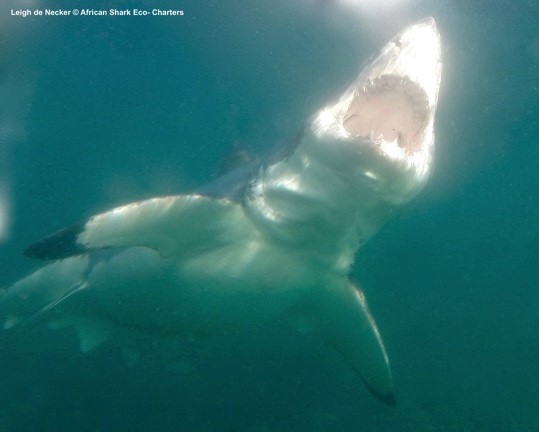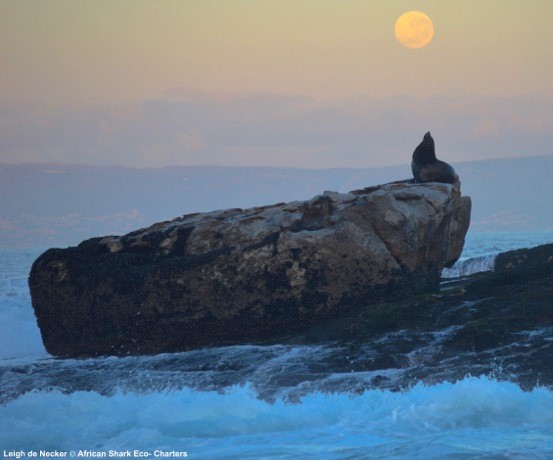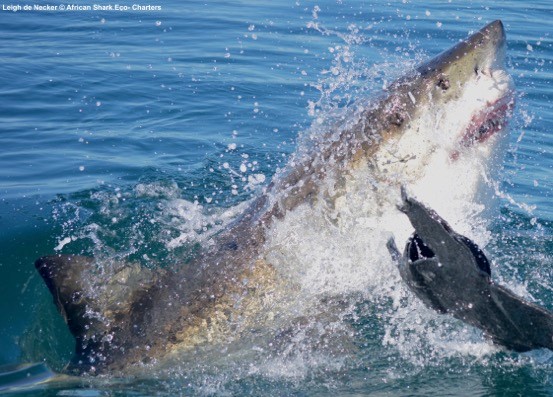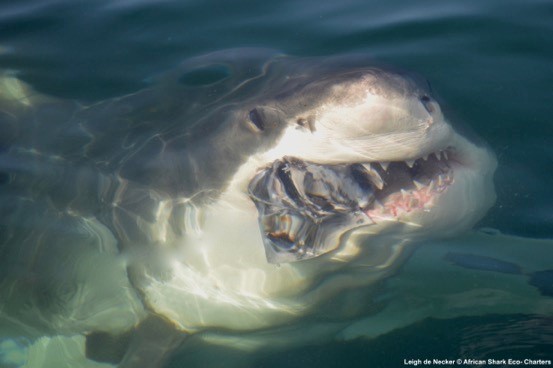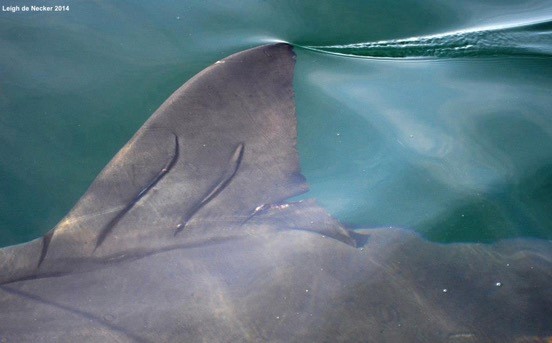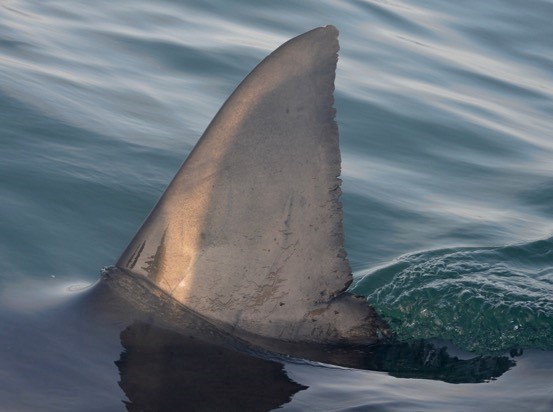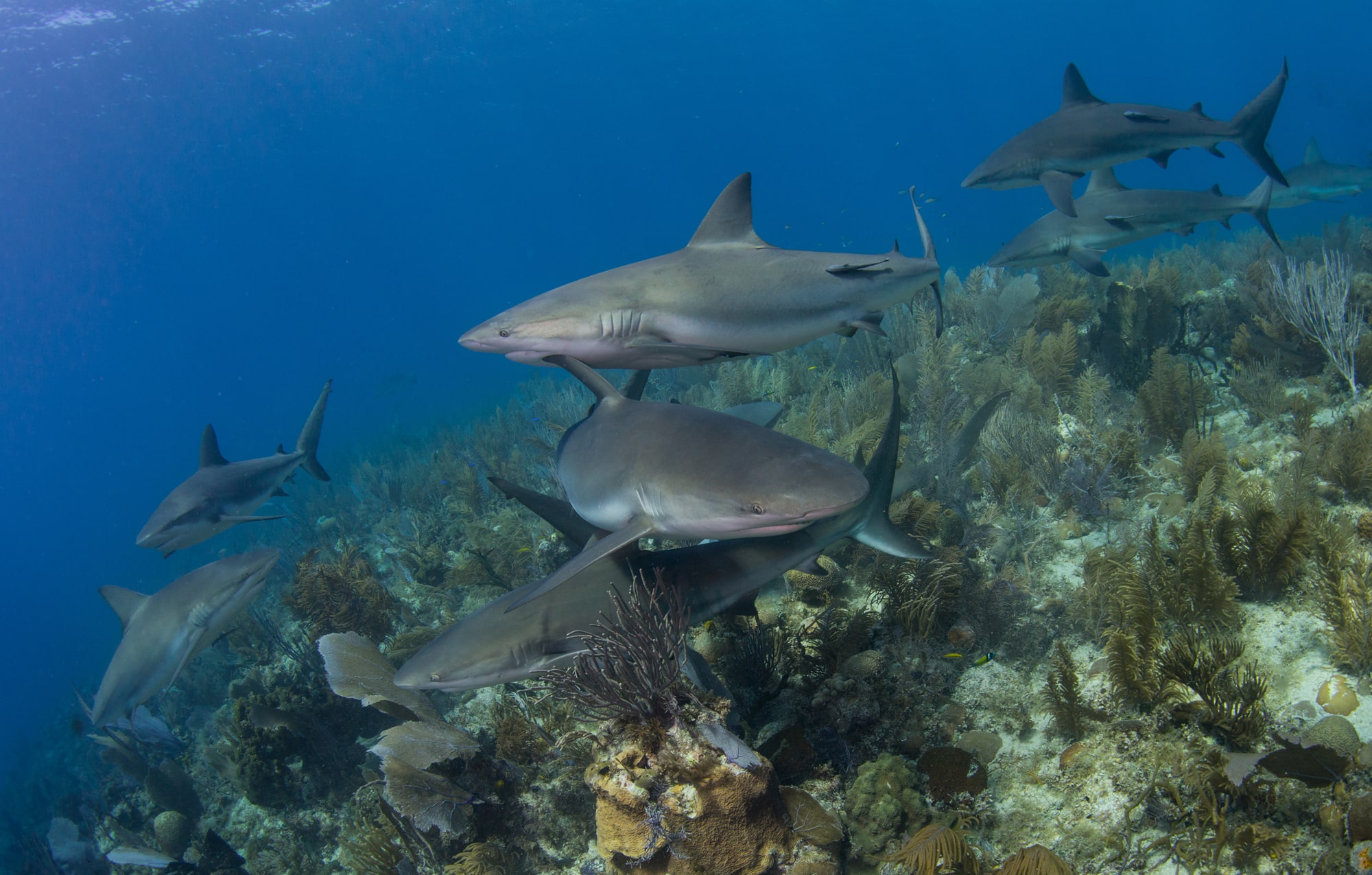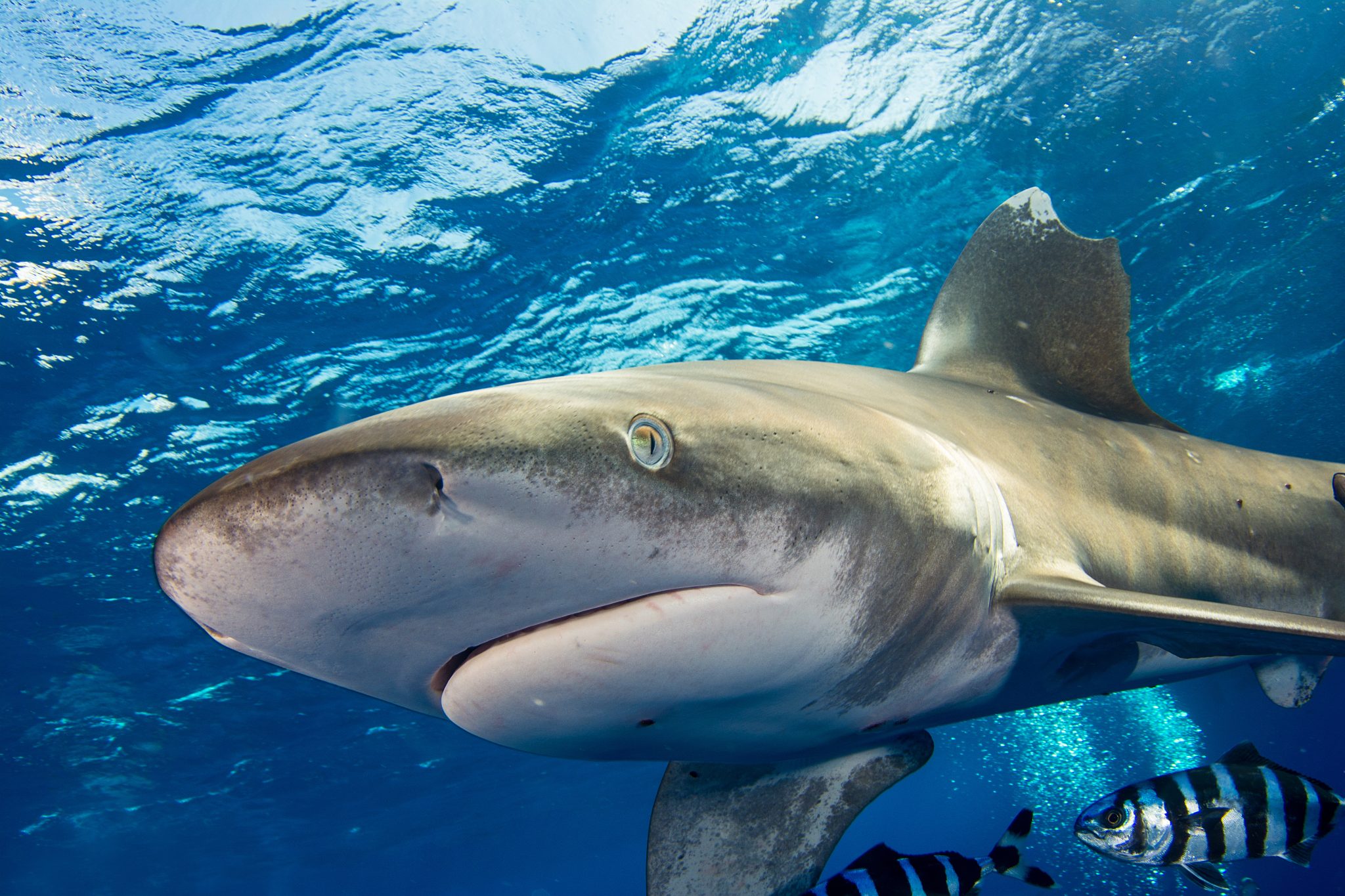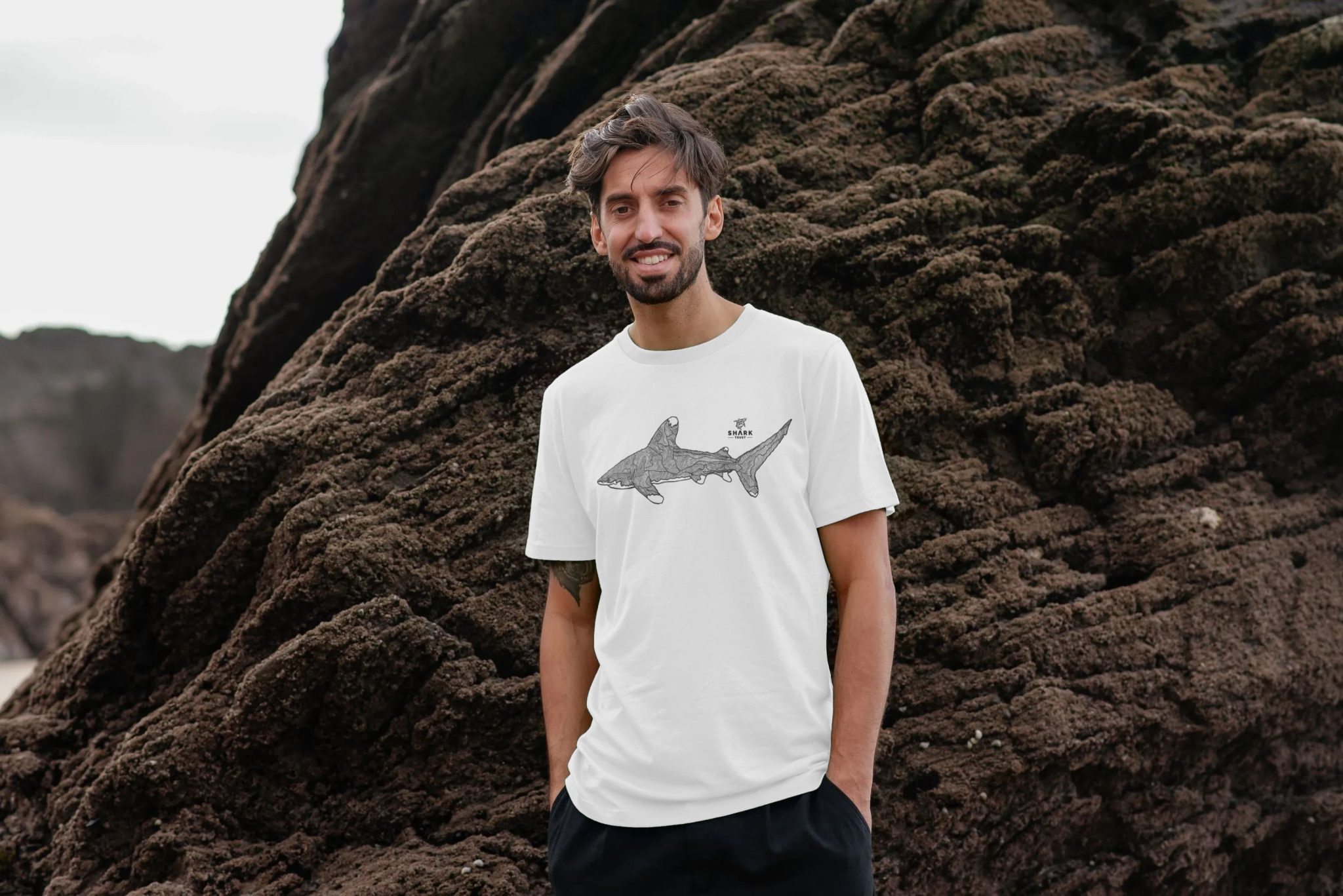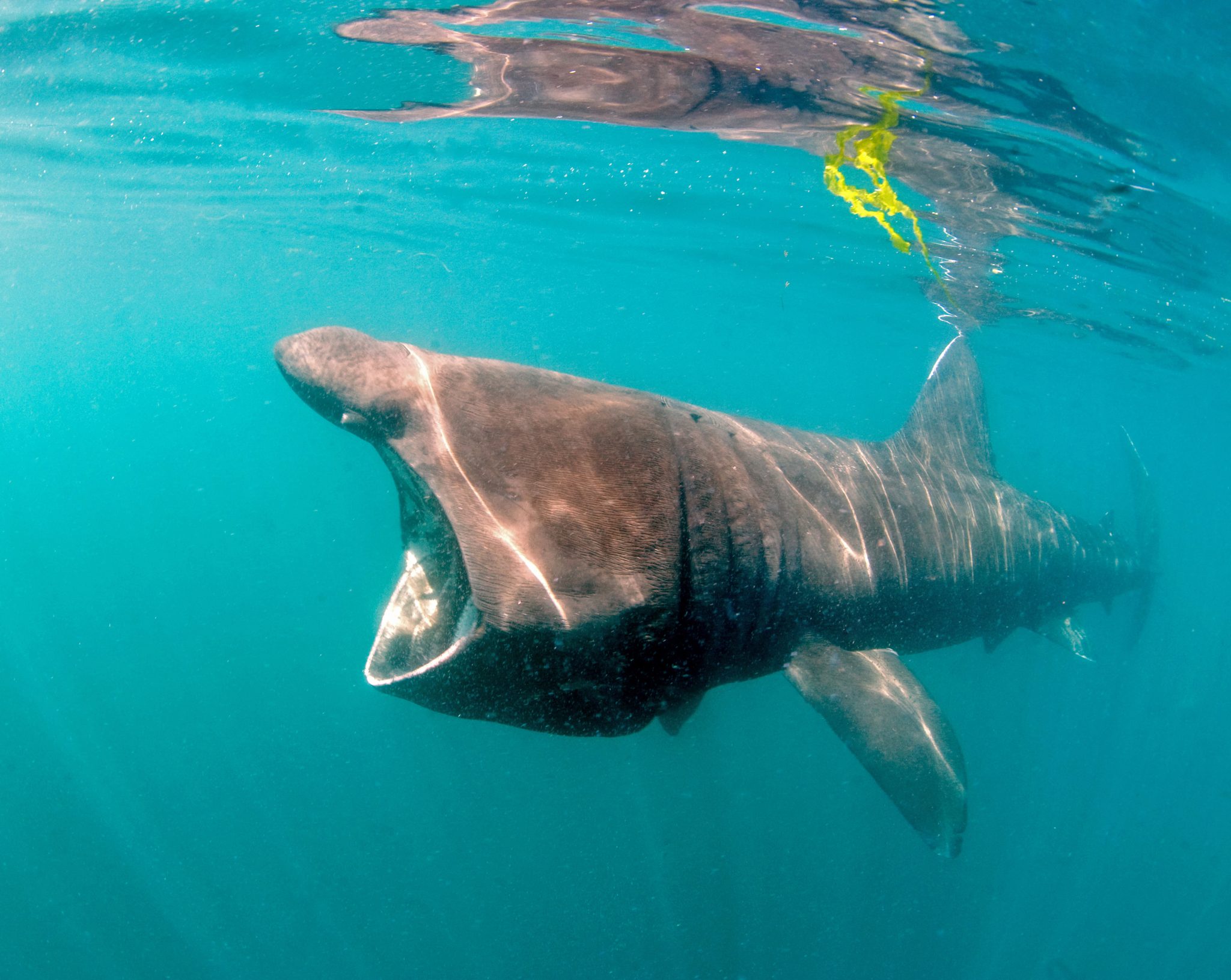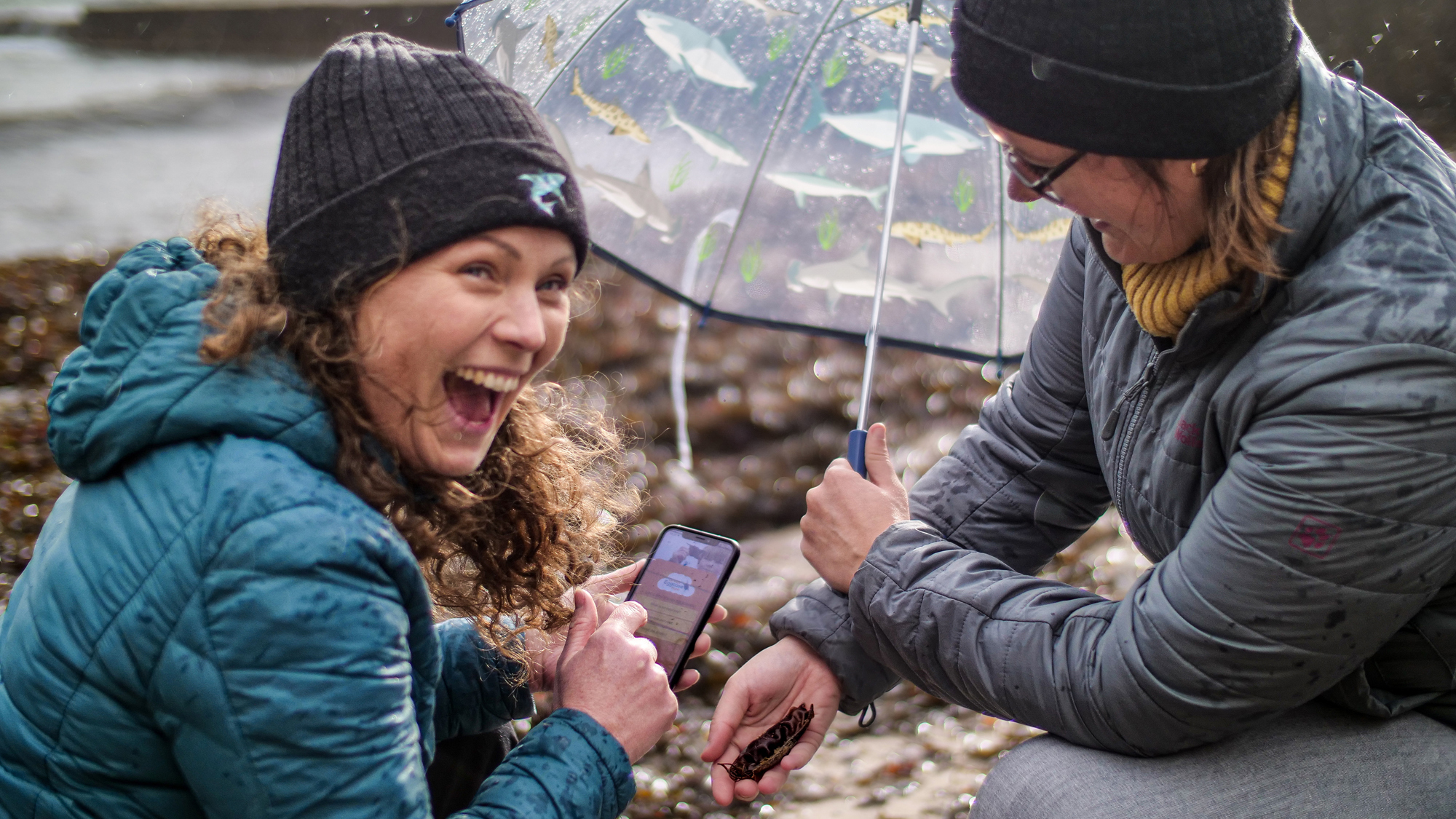Marine Life & Conservation
Summing up the surprises of the 2016 white shark season, Seal Island, False Bay
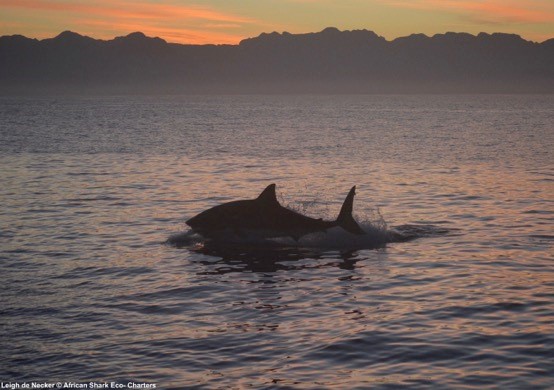
White sharks typically visit False Bay’s Seal Island to take advantage of vulnerable young Cape fur seal pups when they start entering the water to feed. This is generally between March and September; however, this season showed a number of deviations from the expected norms. We took a trip to the Island towards the end of January and before we even had any bait in the water, we had seen a shark. We were beyond excited by the chance of having an early start to the season. This was the first of many unexpected surprises the season had to offer. For February and March, we had amazing shark activity around our boat, seeing an average of 4 sharks a day and still enjoying the late summer, early autumn warm sunny days on the water.
But before we got too comfortable, leaving the sharks to do all our work for us, by the end of April and throughout May, they had simply vanished from Seal Island. There were some really bizarre theories as to where they were and why from crew, clients, fishermen and local shark nuts, but even today the mystery of their temporary disappearance remains. The crew had placed all their bets on the exact date that the sharks would return, and just before we had begun to completely lose our minds (and jobs) the sharks started making an appearance again within the first week of June.
I nearly jumped right off the boat seeing the first shark breach (I always go mad seeing a shark breach, every breach is different and it simply never gets old), but this was a combination of that excitement coupled with relief at the sign that “the shark drought” had potentially come to an end. July was an incredible month with both breaching activity as well as shark activity around the boat. Despite the fact that during this time the sharks were always around, every day, every trip, every hour, in fact, was different. Obviously the breaching and overly enthusiastic sharks around our boat are always a treat, but there were a few really memorable, standout moments this season. Firstly, a shark over 4 m in length, coming fully out of the water attacking a kelp gull just 3 m away from our boat, having the crew and clients very much in the splash zone (this just minutes after I had told a client how breaching was rare in the afternoon, and that I had never seen a shark go for a bird). On another afternoon in July, we had crystal clear waters with over 10 different sharks around our boat, flying at our bait and decoy consistently from all different angles! It was the best kind of chaos!
Further, seeing some of our favourite sharks returning to the boat over consecutive days, a special mention (and thanks) to some of the stars this year: “Zebra,” “Dodgey L,” “Prop,” “Jika,” “Patches,” “Captain MF Hook” “Stumpy Freddy,” “The one with the bent dorsal (Orca/Nemo)” and a few OCEARCH tagged sharks, including “Vindication” and “Maureen.” Of course once we’ve named them, we get very emotionally attached. They become like a puppy dog, really cute but with rather sharp teeth, eating all your personal belongings. When naming and identifying individual white sharks, its usually from a distinguishing feature, scar or behaviour. However, it is incredible to see how much their behaviours’ vary, not only between the different individuals, but even for a particular shark on a particular day. With the number of times I’ve seen a shark put all its effort into the most magnificent breach, only for its targeted seal prey to get away, its not difficult to believe that a shark can have a bad day. Sometimes we’d see sharks hunting and making successful kills still visiting our boat and scavenging at our bait. Surprisingly, and unlike me, sharks don’t seem to have bottomless pits for stomachs, and therefore once they have eaten, they are often uninterested in us, or our bait. Maybe it’s a class thing – why would you eat a stale sandwich when there is fillet steak on offer? It may be more expensive, but totally worth it right?
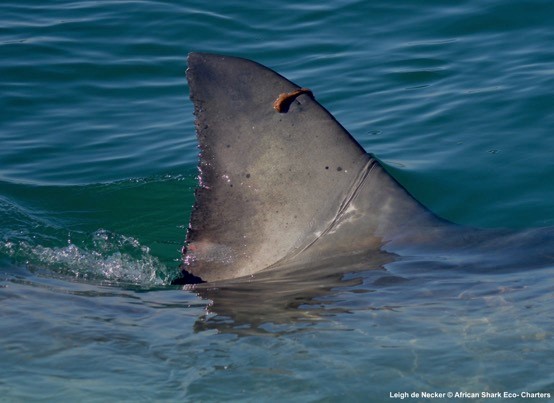
“Captain MF Hook”- I only have a picture of her dorsal fin because she was simply too big to fit in the frame at a massive 5 m in length (we’re going to need a bigger boat).
Another highlight this season was the revisit of the shark “Prop,” named for the propeller scars running along the leading edge and across her dorsal fin. I had first seen her in 2014 when the scars were still fresh and an unmistakable identifying feature. If it weren’t for her stumpy pectoral fin and the fact that she is a particularly large girl, closing in on 5 m, we would not have even recognised her this year. The scars on her dorsal fin had healed up so well being no more than very faint lines across her dorsal fin.
A simple yet perfect example of the perfect predator, proving just how resilient they are and that their ability to heal and recover, is beyond comprehension. There is never a dull moment working with these animals; the more we try to understand them, the more we are left with a whole new set of questions rather than answers. Every day, heading out to Seal Island, you don’t know what you’re going to get. By describing this season as “surprising” “unusual” “unexpected” “unpredictable” is quite appropriate really, because all these words fundamentally define and describe “nature.” If nature were predictable, it would not be as fascinating as it is. To us, what appeared to be “inconsistencies” in the season, served as an important reminder of just how dynamic nature is and it has allowed us to continue marvelling in the mystery that is the white shark.
Leigh is the On-board Marine Biologist for African Shark Eco Charters. Find out more at www.ultimate-animals.com.
Marine Life & Conservation
Leading UK-based shark conservation charity, the Shark Trust, is delighted to announce tour operator Diverse Travel as a Corporate Patron
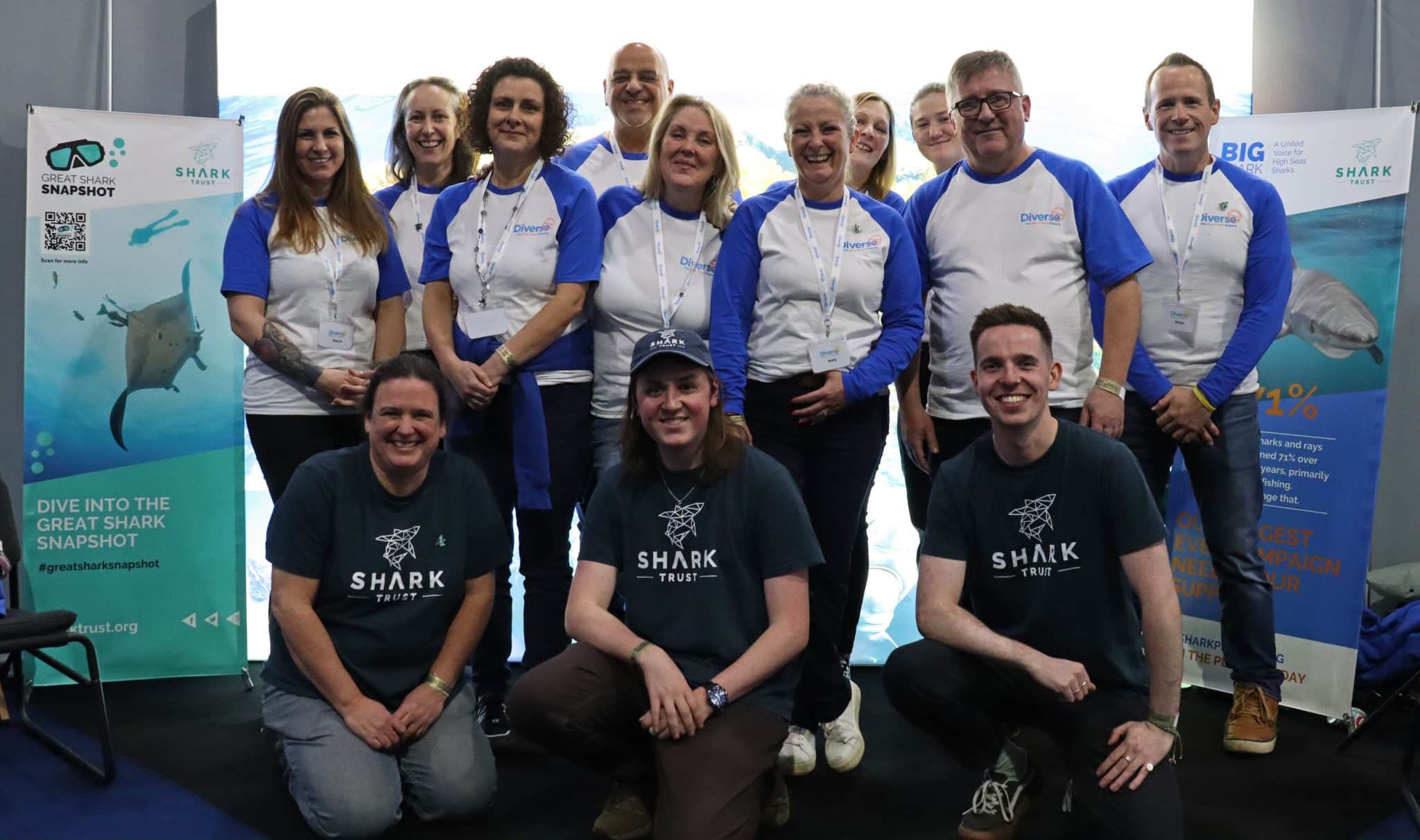
 Corporate Patrons provide a valuable boost to the work of The Shark Trust. The Trust team works globally to safeguard the future of sharks, and their close cousins, the skates and rays, engaging with a global network of scientists, policymakers, conservation professionals, businesses and supporters to further shark conservation.
Corporate Patrons provide a valuable boost to the work of The Shark Trust. The Trust team works globally to safeguard the future of sharks, and their close cousins, the skates and rays, engaging with a global network of scientists, policymakers, conservation professionals, businesses and supporters to further shark conservation.
Specialist tour operator Diverse Travel has operated since 2014 and is committed to offering its guests high quality, sustainable scuba diving holidays worldwide. Working together with the Shark Trust will enable both organisations to widen engagement and encourage divers and snorkellers to actively get involved in shark conservation.
“Sharks are truly at the heart of every diver and at Diverse Travel, we absolutely share that passion. There is nothing like seeing a shark in the wild – it’s a moment that stays with you forever!” says Holly Bredin, Sales & Marketing Manager, Diverse Travel.
“We’re delighted to celebrate our 10th year of business by becoming a Corporate Patron of the Shark Trust. This is an exciting partnership for Diverse and our guests. We will be donating on behalf of every person who books a holiday with us to contribute towards their vital shark conservation initiatives around the world. We will also be working together with the Trust to inspire divers, snorkellers and other travellers to take an active role – at home and abroad – in citizen science projects and other activities.”
Paul Cox, CEO of The Shark Trust, said:
“It’s an exciting partnership and we’re thrilled to be working with Diverse Travel to enable more divers and travellers to get involved with sharks and shark conservation. Sharks face considerable conservation challenges but, through collaboration and collective action, we can secure a brighter future for sharks and their ocean home. This new partnership takes us one more valuable step towards that goal.”
For more information about the Shark Trust visit their website here.
For more about Diverse Travel click here.
Marine Life & Conservation
Shark Trust Asks Divers to help with Shark Sightings this Global Citizen Science Month
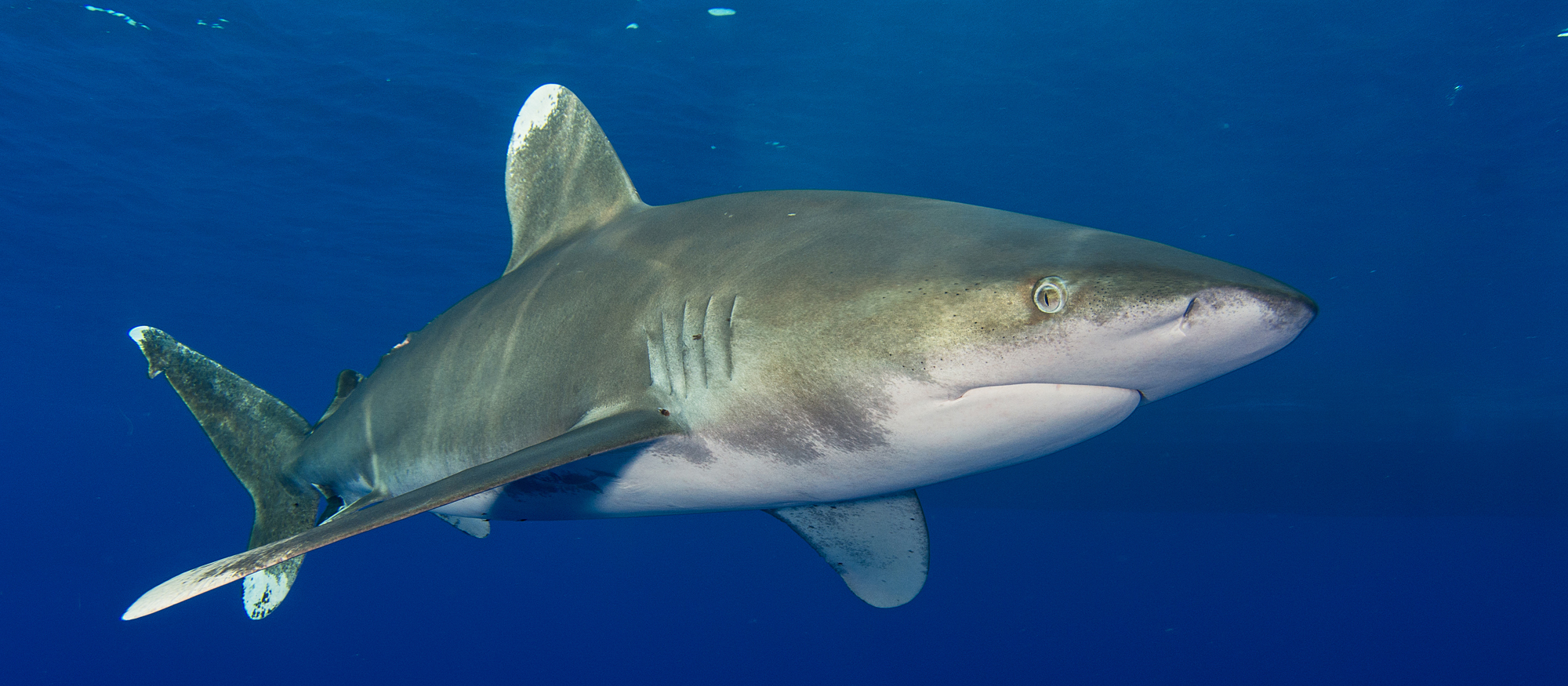
 Whether you are stuck for ideas of what to do with the kids or are off on the dive trip of your dreams. You can get involved in Citizen Science Month and help the Shark Trust by providing vital data about sharks are rays both close to home and further afield.
Whether you are stuck for ideas of what to do with the kids or are off on the dive trip of your dreams. You can get involved in Citizen Science Month and help the Shark Trust by providing vital data about sharks are rays both close to home and further afield.
In addition to reporting the sharks and rays you see on your dives, the eggcases you find on the beach, the Shark Trust is looking for some specific data from divers who are asked to report any Oceanic Whitetip and Basking Sharks.
Oceanic Whitetip Sharks
The Shark Trust are looking specifically for Oceanic Whitetip Shark sightings over the coming weeks and months. So, if you are diving anywhere in the world, please report your sightings via the website or app.
Website: https://recording.sharktrust.org/
App: Search The Shark Trust in your app store
The Oceanic Whitetip. Known for their incredibly long dorsal and pectoral fins, this species was once the most abundant oceanic-pelagic species of shark on the planet.
Large and stocky, they are grey or brown above, and white below and famous for their huge rounded first dorsal fin and paddle-like pectoral fins. The fins also highly prized within the shark fin trade. Whilst they are mostly solitary, Oceanic Whitetips do occasionally hunt in groups.
An inquisitive species, they were easy prey for fisheries. Combined with their low reproductive rate, they were inevitably at high risk of population depletion. And declines of up to 99% have been reported in certain sea areas. They are listed as Critically Endangered on the IUCN Redlist (2019).
Conservation efforts to discourage further declines include listing on CITES Appendix II and CMS Appendix I. They’re also the only species prohibited from take by all the Tuna RFMOs (Regional Fisheries Management Organisations). However, these measures do not mean that Oceanic Whitetips are not still caught – whether targeted or as bycatch – in some parts of the world. With populations declining at such a high rate, effective implementation of management measures is essential to ensure that the species can recover.
If you are lucky enough to get an image of an Oceanic Whitetip and you record your sighting on the Shark Trust app or website YOU CAN WIN! All images submitted with sightings, that also give consent to use in conservation messaging, will be in with a chance to win an Oceanic Whitetip T-shirt and mug. The competition will run until the end of “Shark Month” in July – so keep those sightings (and images) coming in.
Basking Sharks
Basking Shark (Cetorhinus maximus) season is upon us, and the Shark Trust is asking everyone to keep an eye out for these majestic giants over the summer months. If you see any, you can record your sighting to the Basking Shark Sightings database.
Each year, these mighty fish return to British waters to feed on plankton. You may see one, (or a few if you’re really lucky) from around April-October. They can be seen feeding at the surface of the water, where they look like they’re basking in the sun. Thus, their name!
Sighting hotspots around the British Isles include southwest England, Isle of Man, north coast of Ireland, and western Scotland. The Sea of the Hebrides is the most prolific sightings area in Scotland, but they have been spotted all around the coast and have even ventured into some of the sea lochs. The Shark Trust has received thousands of sightings since the Basking Shark project began, but more data is needed to truly understand what is going on with population numbers and distribution. You can help by recording your sightings this summer.
Great Eggcase Hunt
The Shark Trust has an Easter Egg Hunt with a difference for you to try. Take part in the Great Eggcase Hunt and get involved with a big citizen science project that helps shark, ray and skate conservation. And it’s an enjoyable activity for all the family.
The Shark Trust also want snorkellers and divers to record their underwater eggcase findings. Underwater records help pinpoint exactly where sharks and skates are laying their eggs and can help link to beach records. Learning the depth and substrate that they lay on also helps better understand the species.
Find out more: https://www.sharktrust.org/great-eggcase-hunt
Whether you are diving, snorkelling or exploring on the beach you can take part in Citizen Science Month and get actively involved in shark and ray conservation. Find out more: www.sharktrust.org
-

 News3 months ago
News3 months agoHone your underwater photography skills with Alphamarine Photography at Red Sea Diving Safari in March
-

 News2 months ago
News2 months agoCapturing Critters in Lembeh Underwater Photography Workshop 2024: Event Roundup
-

 Marine Life & Conservation Blogs2 months ago
Marine Life & Conservation Blogs2 months agoCreature Feature: Swell Sharks
-

 Blogs1 month ago
Blogs1 month agoMurex Resorts: Passport to Paradise!
-

 Blogs2 months ago
Blogs2 months agoDiver Discovering Whale Skeletons Beneath Ice Judged World’s Best Underwater Photograph
-

 Gear News3 months ago
Gear News3 months agoBare X-Mission Drysuit: Ideal for Both Technical and Recreational Divers
-

 Gear Reviews2 months ago
Gear Reviews2 months agoGear Review: Oceanic+ Dive Housing for iPhone
-

 Marine Life & Conservation2 months ago
Marine Life & Conservation2 months agoSave the Manatee Club launches brand new webcams at Silver Springs State Park, Florida


